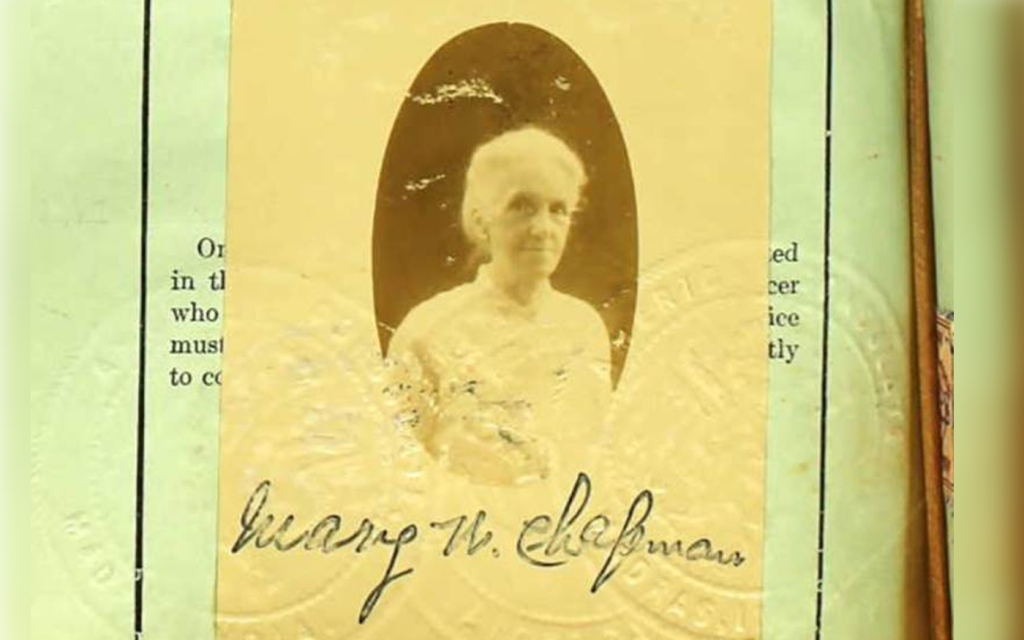
This Week in AG History — April 18, 1925
By Darrin J. Rodgers
Originally published on AG-News, 18 March 2024
When veteran missionary Mary Weems Chapman (1857-1927) felt God’s call to return to India, her family told her she was too old. But she persevered and became the first Assemblies of God missionary to South India. A veteran Free Methodist missionary before identifying with the Pentecostal movement, Mary was well-known in Holiness circles for her preaching, teaching, and writing. But she was perhaps best known for her advocacy of ministry to girl prostitutes and the “untouchables” — members of India’s lowest social caste.
Mary and her husband, George, were pioneer leaders in the Pentecost Bands, a Free Methodist missions organization known for promoting both holiness and social ministry. They founded the Free Methodist work in Monrovia, Liberia, in 1889. They returned to America in 1893.
Mary was a prolific author. She edited a volume of writings by Holiness advocate Eunice Parsons Cobb, Mother Cobb, or Sixty Years with God (1896). She also served a one-year stint (1898) as founding editor of Missionary Tidings, published by the General Woman’s Foreign Missionary Society of the Free Methodist Church.
George seemingly disappeared from Mary’s writings in the 1890s. Whether he died or something else happened is unknown. But she continued in ministry as a single woman. She moved to India in about 1900, where she worked at a Pentecostal Rescue Home that plucked young girls out of prostitution and provided education and spiritual help.
Single and aging, in about 1909 she returned to America. But she could not shake the sense that God wanted her to help the suffering girls of India. By 1911 she surfaced in Pentecostal periodicals, writing gut-wrenching articles about the great need to rescue girls in India who had been sold into sexual slavery.
Feeling a holy restlessness, Mary decided to return to India. She was approaching 60 years old. Her family tried to dissuade her, telling her she was too old to endure the rigors of missionary work. But her mind was made up. She told her family, “If young people are not able to go, old people must go.”
Mary arrived in India in 1915 and established her first missionary base in Doddaballapur, near Bangalore. She conducted evangelistic meeting in numerous parts of South India. In 1917, she affiliated with the Assemblies of God and became the Fellowship’s first missionary in South India.
Mary’s extensive writing and editing skills proved useful in her missions work. She was concerned by the poor discipleship of new converts and by the vast amount of anti-Christian and anti-Pentecostal literature that was causing confusion. To help remedy these problems, in 1925 she co-founded a magazine called Penthecosthu Kahalam (Pentecostal Trumpet) in the Malayalam language. She also wrote over 50 articles and letters published in the Pentecostal Evangel from 1913 to 1927.
In one of those letters, published in the April 18, 1925, issue of the Pentecostal Evangel, Mary described the plight of the Dalits, also called the “untouchables” because of their low social position. She described the joy of the Dalits who accepted Christ and were “adopted in the family of heaven.” She noted that her missionary colleagues started a school to educate young converts, because Dalits were not permitted to attend school with people from other classes in Indian society.
After 10 years of ministry under the Assemblies of God banner, Mary Weems Chapman died on November 27, 1927. She was 70 years old.
Samuel Jabarethnan, Chapman’s interpreter for the last eight years of her life, wrote the following tribute: “I found Sister Chapman to be a most devoted and spiritual missionary. She stood not just for the Pentecostal experience, but emphasized the need for a deep spiritual, sanctified life . . . Sister Chapman was never satisfied with shallow, superficial things, either in a worker, a Christian, or an assembly. She demanded reality and set the example in her own life . . . Sister Chapman loved to spend much of her time in prayer. She never allowed the duties or responsibilities of her work to interfere with her prayer life. She labored and groaned in deep intercessory prayer for the souls of men to be saved, and as a result the Lord richly blessed her ministry.”
Read Mary Chapman’s article, “Ministering to the Untouchables,” on page 11 of the April 18, 1925, issue of the Pentecostal Evangel.
Also featured in this issue:
• “Faith in the Invisible,” by Ernest S. Williams
• “Gleanings from the Book of Ruth,” by A.G. Ward
• “Denying Self,” by Alice Rowlands Frodsham
And many more!
Click here to read this issue now.
Pentecostal Evangel archived editions courtesy of the Flower Pentecostal Heritage Center.
Do you have Pentecostal historical materials that should be preserved? Please consider depositing these materials at the Flower Pentecostal Heritage Center (FPHC). The FPHC, located in the Assemblies of God national offices, is the largest Pentecostal archive in the world. We would like to preserve and make your treasures accessible to those who write the history books.
Flower Pentecostal Heritage Center
1445 North Boonville Avenue
Springfield, Missouri 65802 USA
Phone: 417.862.1447 ext. 4400
Toll Free: 877.840.5200
Email: archives@ag.org
Website: https://ifphc.org/


